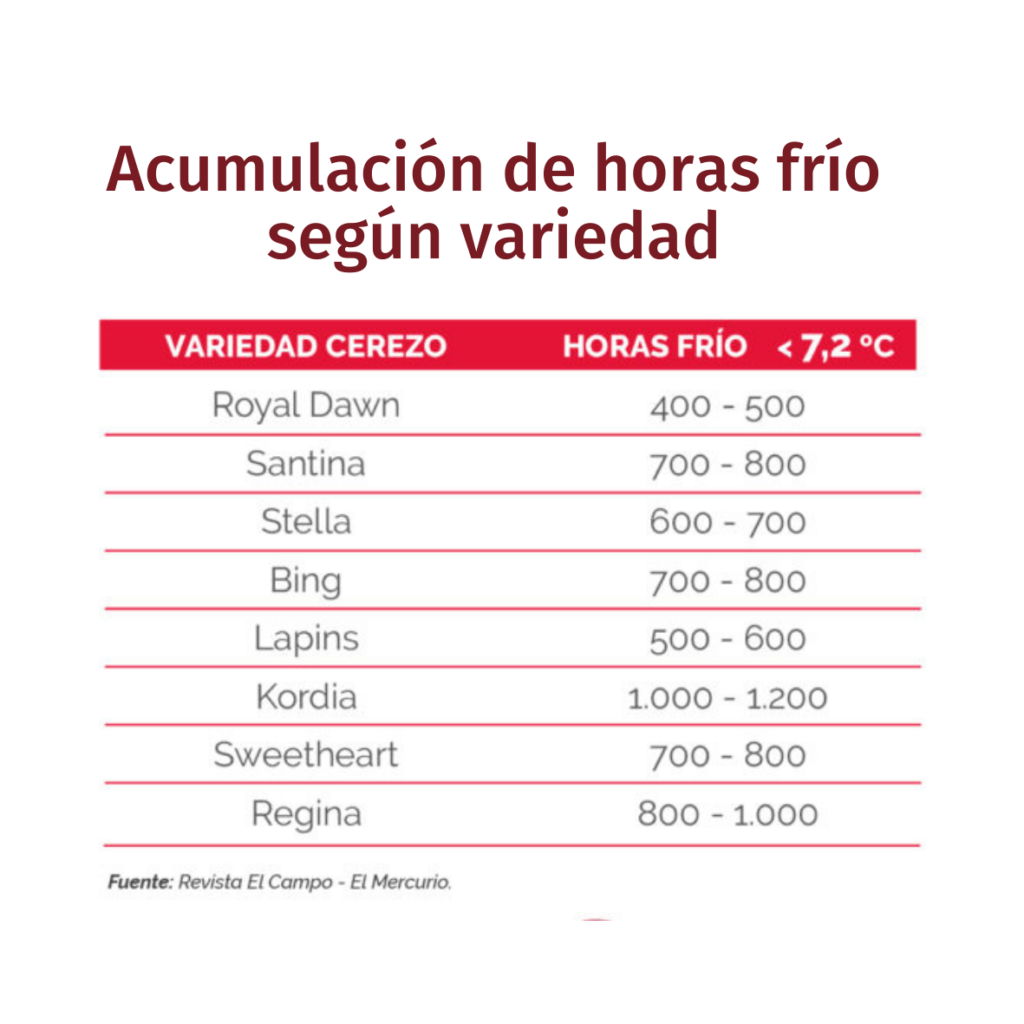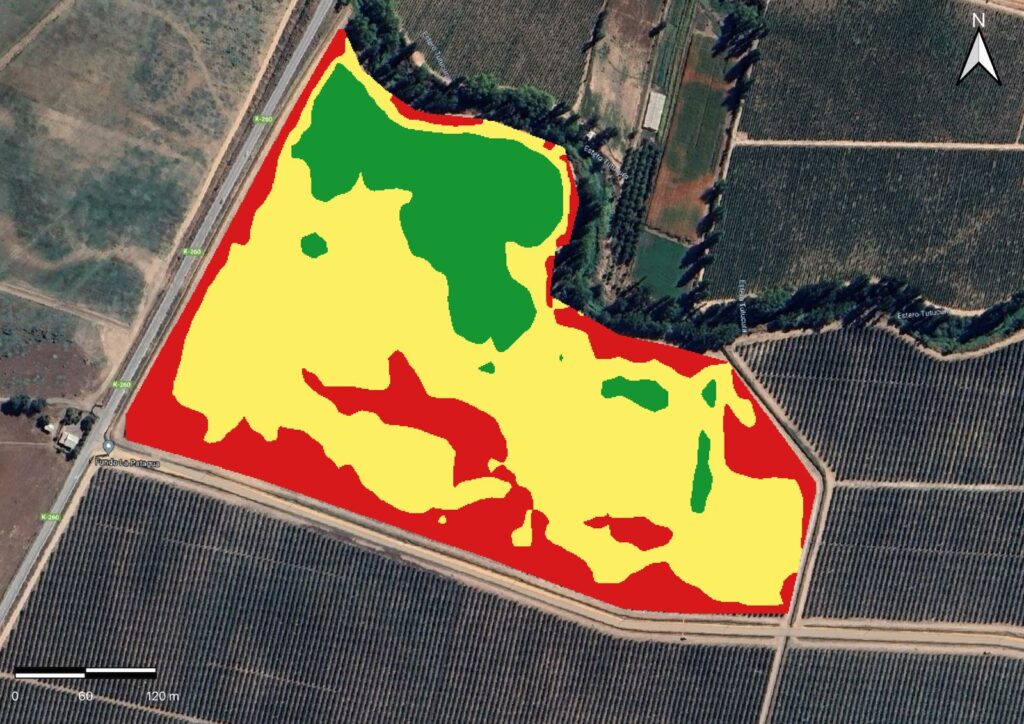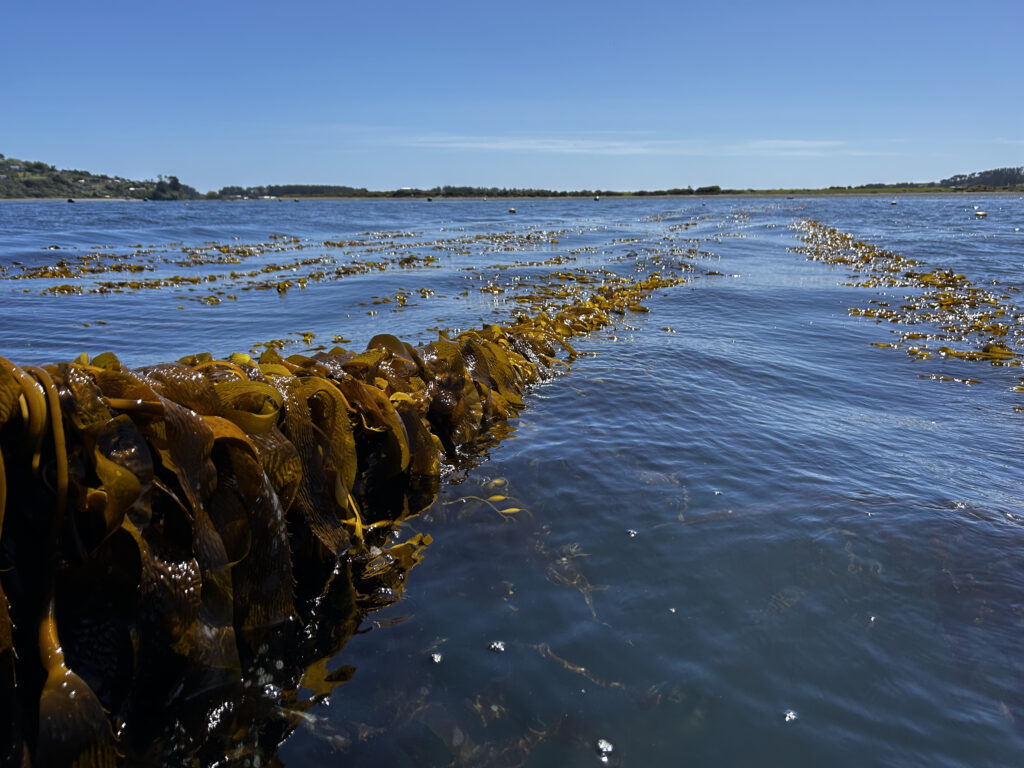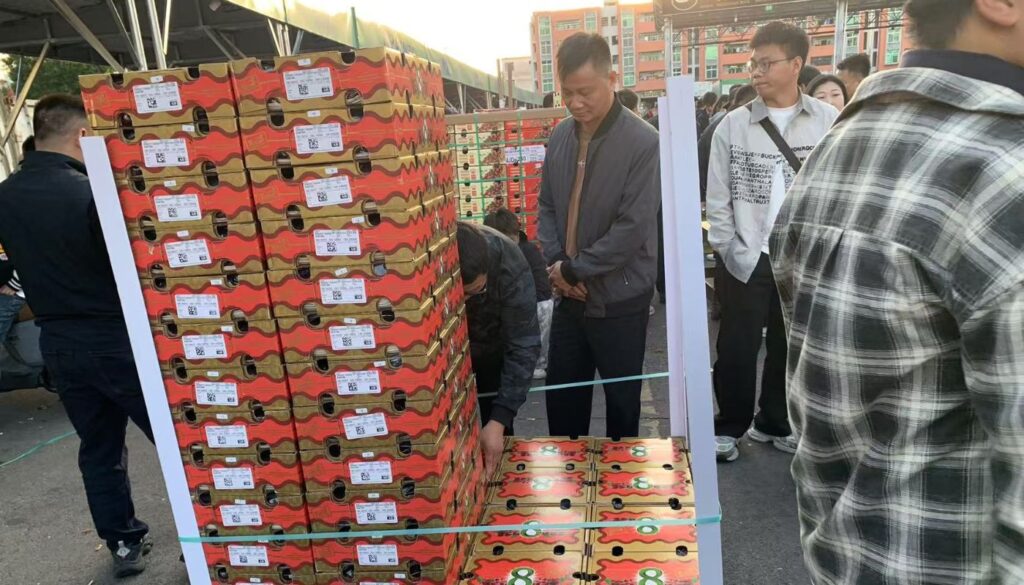Each variety of cherry requires a different amount of accumulated chilling hours, which help the plant to make available the reserves it stored during post-harvest.
From May 1st to July 31st, cherry plants accumulate cold hours, a highly relevant factor in the reproductive cycle of deciduous trees, especially cherry trees. This accumulation is directly related to the use of the reserves that the trees have to start the next season, in favor of the productive objective of achieving their potential in terms of quantity, quality and condition of the fruit.
For a correct accumulation of chill hours, cherry plants must have begun their physiological dormancy stage, marked by the fall of 50 percent of their leaves (yellow leaf = fallen leaf); this should ideally occur at the end of April or beginning of May, which is when the accumulated chill hours begin to be counted. If this condition does not occur naturally, certain strategies must be used to accelerate this process, which were explained in detail in previous articles.
It is worth remembering that each variety has a different chilling hour requirement, according to its needs, based on the classic model of chilling hour accumulation, i.e. below 7.2ºC.

Last year, the accumulation of chilling hours was at its limit. Winter precipitation in the central zone, which is clearly useful for crops, ended up slowing down this accumulation. In many areas, this factor was below the 250 or 240 hours of chilling accumulated in June, a month coinciding with the central part of dormancy, or endodormancy, the stage where the greatest accumulation of chilling hours occurs.
Coincidentally, in years in which the productive potential has been high, at least 250 hours of cold have been achieved between June 1 and 30.
Why are chill hours important?
The winter cold helps the plant to make available the reserves it accumulated during the post-harvest, that is, during part of December and the months of January and February. It is important to take this factor into account when making decisions, not only when applying dormancy breakers, whether with different objectives such as homogenizing or advancing, but it should also be considered, for example, for renewal pruning and load regulation, since the cold is an indicator, although not the only one, but it is important, of the fertility and production of each year. The cold reaches the plant as an ecological aid so that its reproductive and vegetative organs occupy these reserves and develop in optimal terms.
The question then arises as to whether dormancy breakers are effective or whether they must be used compulsorily, and the answer is: “it depends”. Of course, since this decision will be defined by the area, the variety, the rootstock, the fertility status and, of course, the objective pursued, whether it is to advance flowering and harvest, to partialize harvest, to decompress if there is a large area of the same variety, to synchronize flowering in varieties that need to be pollinated by others, to homogenize phenological states, considering that this last objective is governed by dormancy breakers alternative to hydrogenated cyanamide, therefore there are many considerations that will be treated in detail later, in a new article.
For now, the important thing is to keep an eye on the accumulation of cold hours, whose official monitoring began on May 1, a period that will extend until July 31. To this end, for the third consecutive year, Smartcherry will make available to the cherry industry the report on the evolution and comparison of the accumulation of cold hours, prepared by the Avium technical team, whose publication date will be announced in due course.
This report will allow us to know the accumulation of cold hours and compare with previous years, which is essential information for making decisions in the fields, for example in the pruning strategy or nutritional strategy and making projections for what the next season will be like.
It is important to monitor this, not only the final accumulation as of July 31, but also the monthly and even weekly accumulation, in order to have a real comparison with previous seasons, which can also be compared with data from our own meteorological stations, and thus define a correct strategy to maintain or improve the productive potential of an orchard.








